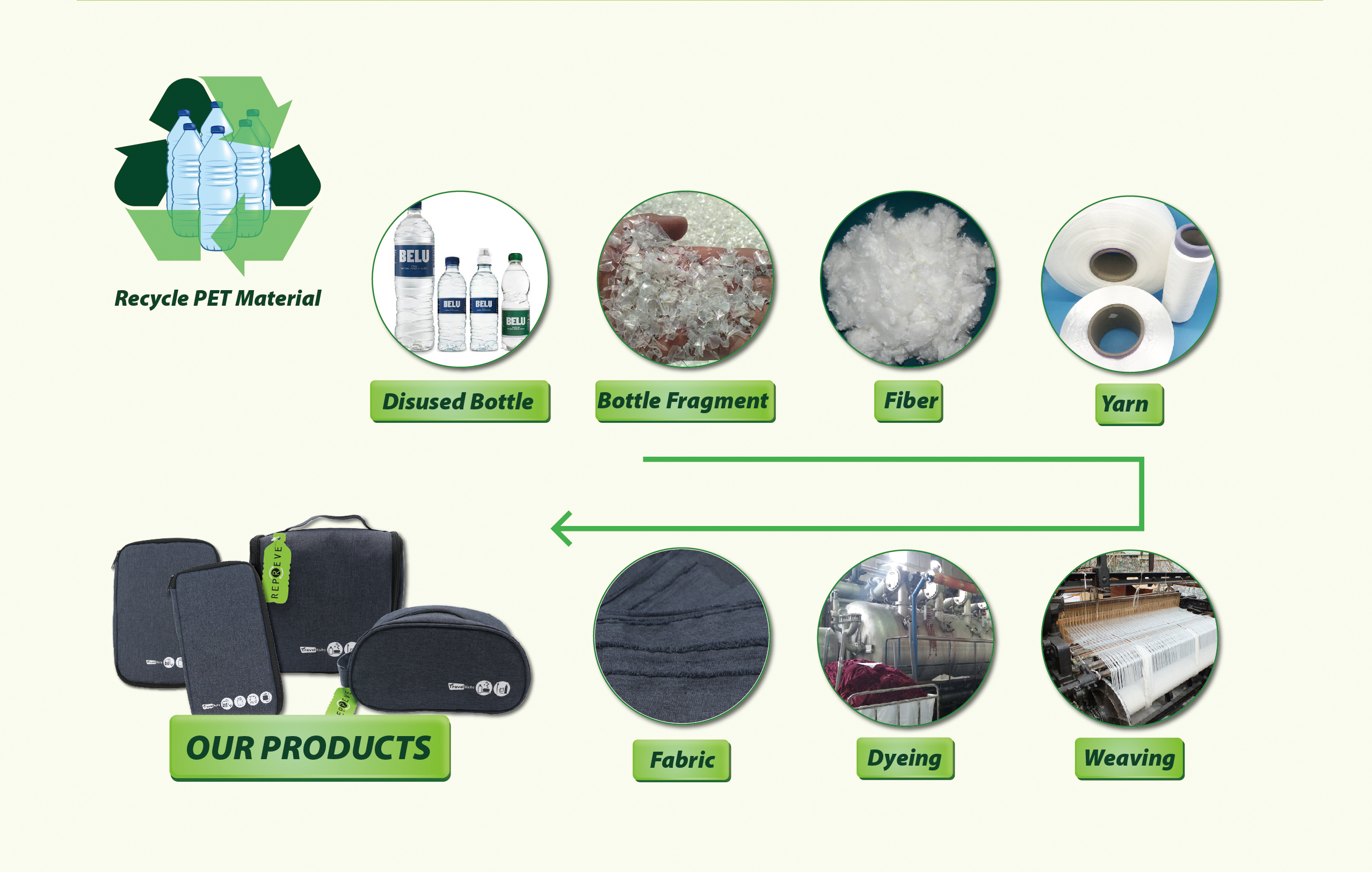What is RPET and why we need it?
PET plastic, found in daily beverage bottles, is one of the most recycled plastics today. Despite its controversial reputation, not only is PET a versatile and durable plastic, but recycled PET (rPET) has evidently resulted in a much lower environmental impact than its virgin counterpart. That is owing to the fact that rPET reduces oil usage and greenhouse gas emissions associated with virgin plastic production. So, what is rPET? How is it recycled? And what renders it sustainable?
What is RPET?
rPET, short for recycled polyethylene terephthalate, refers to any PET material that comes from a recycled source rather than the original, unprocessed petrochemical feedstock.
Originally, PET (polyethylene terephthalate) is a thermoplastic polymer that is lightweight, durable, transparent, safe, shatterproof, and highly recyclable. Its safety is primarily evident in terms of being eligible for food contact, resistant to microorganisms, biologically inert if ingested, corrosion-free, and resistant to shattering that may be particularly harmful.
It is commonly used as packaging material for foods and beverages – mostly found in transparent bottles. Yet, it has also found its way into the textile industry, usually referred to by its family name, polyester.
As of 2019, polyester fibers have comprised the primary end-use segment of the rPET industry at about 45%. Still, other segments, such as bottle-to-bottle production, remain effective market drivers, as well. According to a report by Acumen Research and Consulting, the rPET market size is predicted to grow at a compound annual growth rate (CAGR) of no less than 8% to reach about US$ 12.5 billion by 2026. This projection is set as awareness of environmental sustainability has been increasing among customers, and multiple countries across Europe and North America have started establishing bans on landfills. This growth demonstrates an improvement in rPET’s adoption and a boost to its reputation.
Today, not only is PET the most widely recycled plastic in the world, but its production, collection, recycling, and reprocessing back into valuable material have also become increasingly efficient. This has enabled it to use fewer resources and less energy than ever before, rendering it more sustainable.
Why should we recycle PET?
For PET, its high durability means it will take five to seven centuries to begin to break down if it ends up in landfills. This low degradation rate, alongside the increasing volume of PET production, has rendered it a contributor to the plastic waste crisis the world is facing today.
Furthermore, the end-of-life stage is not the only period of a material’s life cycle where recycling plays a significant role. By allowing post-industrial PET waste to circle back and re-enter the production phase, the amount of raw material required for PET production decreases. Increased use of post-consumer and post-industrial recycled plastic means less extraction of natural resources and less energy needed for that extraction. Such a measure helps preserve these finite resources and lowers both the carbon footprint and embodied energy of the material. By doing so, we give rise to what experts call a circular economy for plastics, in which waste is minimized, carbon emissions reduced, and the material’s economic value maintained.
How is PET recycled?
There are many elements that go into the process of recycling PET, and we must understand how recycling is actually done to make sure that everyone does their part in our efforts towards sustainability.
The process of recycling PET is made of 5 consecutive stages:
1.Disposal
2.Collection and initial separation
3.Shredding, separation, cleaning, and sorting
4.Mixing and formulating additives
5.Reactive compounding
How sustainable is RPET?
After understanding the “what, why, and how” of recycling PET, one question remains: How sustainable is rPET? In other words, how much of a positive effect does it have on our efforts towards sustainability? Well, the answer is not as easy as one might think.
Of course, rPET is one obvious solution to PET’s contribution to the waste crisis and an effective factor in carbon reduction and environmental preservation. In fact, a study has shown that rPET can lead to a reduction in greenhouse gas (GHG) emissions by more than 79% compared to virgin PET. Recycling PET can also help minimise ocean-bound PET waste, which is extremely toxic to the ecosystem both as macro-sized plastic waste and broken-down, microplastic waste.
Post time: Jul-14-2022
 0574-27990035
0574-27990035 sales008@ningboyouth.com
sales008@ningboyouth.com


